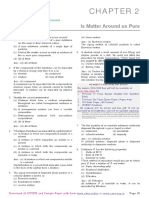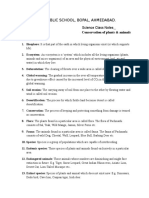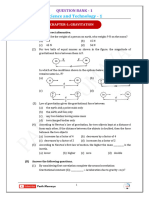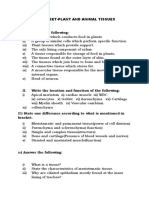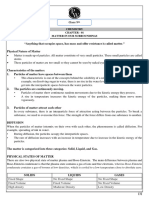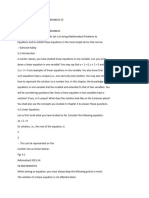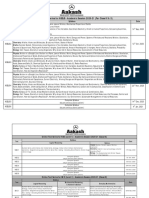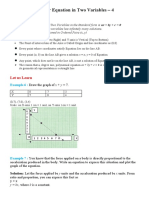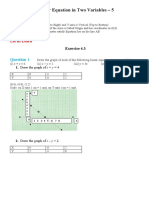0% found this document useful (0 votes)
334 views3 pagesLinear Equation in Two Variables 2
(i) The document provides examples of expressing linear equations in two variables in the standard form of ax + by + c = 0, including finding the values of a, b, and c for each equation.
(ii) It gives examples of finding solutions to linear equations, which are pairs of x- and y-values (written as ordered pairs) that satisfy the equation.
(iii) There are infinitely many solutions to a linear equation in two variables, which can be found by choosing a value for one variable and solving for the other.
Uploaded by
Yashwanta BRIJRAJCopyright
© © All Rights Reserved
We take content rights seriously. If you suspect this is your content, claim it here.
Available Formats
Download as DOCX, PDF, TXT or read online on Scribd
0% found this document useful (0 votes)
334 views3 pagesLinear Equation in Two Variables 2
(i) The document provides examples of expressing linear equations in two variables in the standard form of ax + by + c = 0, including finding the values of a, b, and c for each equation.
(ii) It gives examples of finding solutions to linear equations, which are pairs of x- and y-values (written as ordered pairs) that satisfy the equation.
(iii) There are infinitely many solutions to a linear equation in two variables, which can be found by choosing a value for one variable and solving for the other.
Uploaded by
Yashwanta BRIJRAJCopyright
© © All Rights Reserved
We take content rights seriously. If you suspect this is your content, claim it here.
Available Formats
Download as DOCX, PDF, TXT or read online on Scribd
/ 3





















